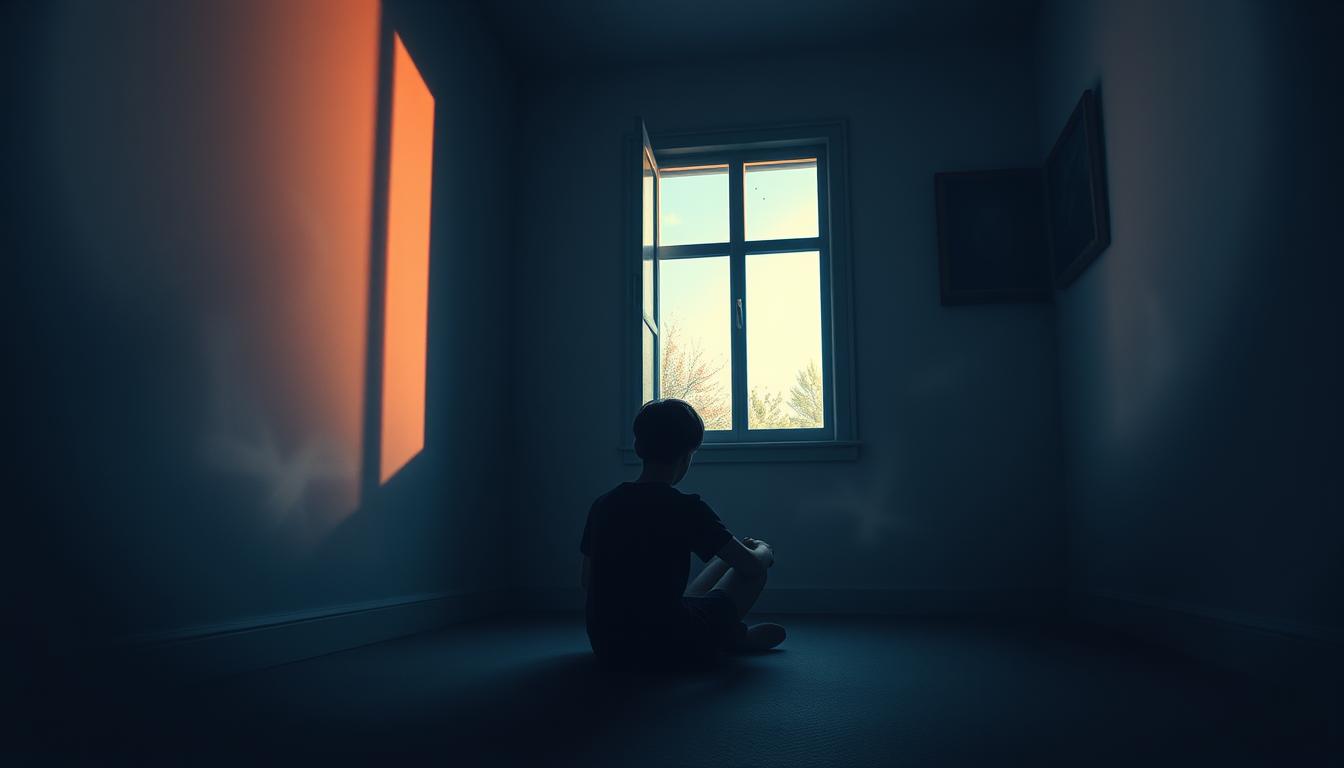As a parent, educator, or community member, understanding youth mental health is key. Adolescence brings big changes in physical, emotional, and social areas. These changes can affect a teen’s well-being a lot.
Depression and anxiety are big issues for teens today. They can impact their school, social, and personal lives a lot.
In this article, we’ll look into teen depression and anxiety. We’ll explore signs, symptoms, risk factors, and how social media affects their mental health. Understanding these issues helps us support our young people better.
Key Takeaways
- Adolescence is a vulnerable time for mental health issues like depression and anxiety.
- Recognizing the signs and symptoms of these conditions is key for early help.
- Risk factors and triggers can lead to teen depression and anxiety.
- The effect of social media on teen mental health is a big concern.
- There are many treatment options and support systems for struggling youth.
Understanding Teen Depression and Anxiety: Signs and Symptoms
Teenagers face many emotional and psychological challenges. It’s important to know the signs of teen depression and anxiety to support their mental health. Let’s look at the key indicators that everyone should be aware of.
Physical Symptoms to Watch For
Depression and anxiety can show up in physical ways too. Look out for changes in sleep, appetite, unexplained pains, or feeling very tired. These signs can help spot mental health issues early.
Emotional and Behavioral Changes
Teen depression and anxiety can cause a range of emotions. These include feeling sad, irritable, hopeless, or worthless. Behavioral signs include pulling away from friends, trouble focusing, and doing poorly in school. Teens might also take risks or have big mood swings.
Academic and Social Impact
Mental health issues can affect a teen’s school and social life a lot. Depression or anxiety can make it hard to keep up with friends, join clubs, or do well in school. Spotting these signs early can help provide the right support.
| Physical Symptoms | Emotional and Behavioral Changes | Academic and Social Impact |
|---|---|---|
|
|
|
Knowing the signs of teen depression and anxiety helps us support young people. Spotting these signs and acting quickly can greatly improve their emotional well-being. It’s key to helping them navigate the challenges of being a teenager.
Risk Factors and Triggers in Adolescent Mental Health
Understanding adolescent mental health is complex. Knowing the risk factors and triggers is key to helping struggling youth. These elements, from genetics to environment, greatly affect a teenager’s mental health.
Genetics play a big role in mood disorders in teens. Family history of depression or anxiety increases a teen’s risk. Neurological and hormonal imbalances also contribute, making early support vital.
Environmental factors like trauma, abuse, or neglect raise the risk of mental health issues in teens. These experiences can upset a young person’s mental and emotional balance. This can lead to depression, anxiety, and PTSD.
Societal pressures and social media also trigger mental health concerns in teens. The comparison to online ideals and the need for a perfect image can harm self-esteem. This makes teens more vulnerable to mood disorders.
Knowing these risk factors helps us support teens better. We can create a nurturing environment for them to thrive. This approach addresses both individual and societal influences.
| Risk Factor | Potential Impact |
|---|---|
| Genetic Predisposition | Increased likelihood of developing mood disorders, such as depression and anxiety, during adolescence. |
| Environmental Influences | Exposure to traumatic events, abuse, or neglect can lead to the onset of mental health challenges, including PTSD, depression, and anxiety. |
| Social Media and Societal Pressures | The constant comparison to idealized online personas and the pressure to maintain a perfect image can contribute to feelings of inadequacy and low self-esteem, which may trigger the development of mood disorders. |

By recognizing these risk factors and addressing the underlying triggers, we can take proactive steps to support struggling youth and promote their overall mental well-being. Through a compassionate approach, we can empower our adolescents to navigate the challenges of this critical stage of their lives.
The Connection Between Social Media and Teen Mental Health
Teenagers face many challenges, and social media adds to these. Seeing perfect online images can hurt their self-esteem and mental health.
Digital Stress and Anxiety
Teens feel stressed and anxious trying to keep up a perfect online image. They worry about missing out (FOMO). This makes them always check their devices, taking away from real-life activities.
Social Comparison and Self-esteem
Seeing perfect lives on social media makes teens feel bad about themselves. This can lead to depression, anxiety, and a negative view of themselves.
Healthy Screen Time Boundaries
Setting limits on screen time is key to protecting teen mental health. It’s about finding a balance between online and offline life. This helps teens deal with digital challenges better.
By understanding the impact of social media, we can help teens manage anxiety and improve their emotional wellbeing. This leads to a more positive teenage experience.
“The greatest weapon against stress is our ability to choose one thought over another.” – William James
Treatment Options and Support Systems for Struggling Youth
Watching a young person deal with depression and anxiety can be tough. But, there are many ways to help struggling youth feel better. Options range from therapy to medication, and a mix can really help.
Cognitive-behavioral therapy (CBT) is a key treatment option for adolescent counseling. It helps teens change their negative thoughts into positive ones. Family therapy also helps by improving communication and creating a healing environment.
For some, medication is part of their treatment. Antidepressants and anti-anxiety meds can help helping depressed teens manage their feelings. It’s important to work with a doctor to find the right medication.
A strong support system is also vital for supporting struggling youth. It’s good to encourage teens to talk to friends, family, and mental health experts. This makes them feel understood and gives them the strength to face their problems.
| Treatment Option | Benefits |
|---|---|
| Cognitive-Behavioral Therapy (CBT) | Helps teens identify and reframe negative thought patterns, developing healthier coping mechanisms. |
| Medication Management | Antidepressants and anti-anxiety medications, when prescribed and monitored by a mental health professional, can help manage symptoms. |
| Family Therapy | Strengthens communication and provides a supportive environment for healing. |
| Building a Strong Support System | Encourages teens to connect with trusted friends, family members, and mental health professionals, helping them feel heard, validated, and empowered. |
By looking into different treatment options and support systems, we can help help depressed teens and supporting struggling youth. This journey to better mental health is possible with the right help.

“The first step towards getting somewhere is to decide that you are not going to stay where you are.” – J.P. Morgan
Conclusion
Understanding teen depression and anxiety is key to supporting our youth’s emotional wellbeing. We must recognize signs and symptoms. Also, we need to tackle risk factors and triggers to help them.
Social media’s impact on teen mental health is clear. Setting healthy screen time limits is vital. We should also seek effective treatments and build strong support systems for them.
You’re not alone in helping our youth. By staying informed and compassionate, we can create a society that values their mental health. Let’s guide them to overcome challenges and thrive.



